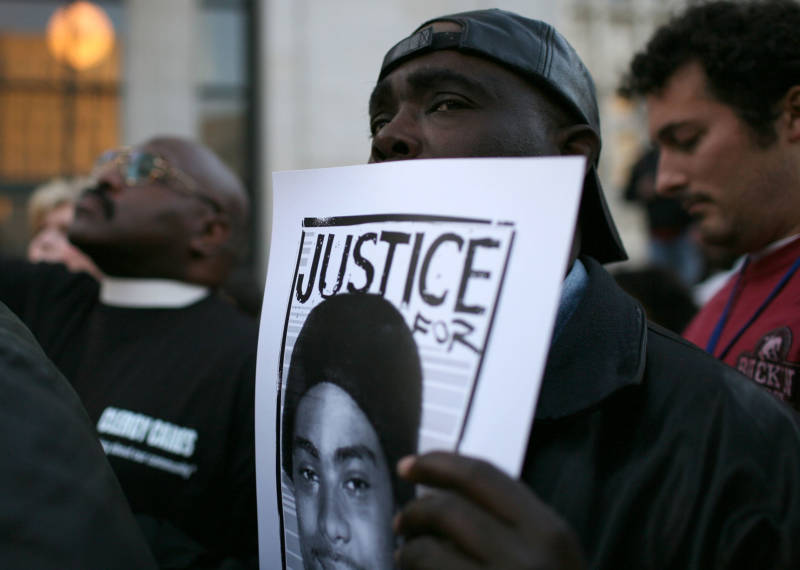A decade ago, a 22-year-old black man was shot and killed by a white transit police officer at the Fruitvale BART station in Oakland. Oscar Grant was unarmed, lying face down on the platform when he was shot.
He wasn’t the first unarmed black man to be shot and killed by law enforcement, and he wouldn’t be the last. But it was potentially the first officer-involved shooting to be captured on video by bystanders’ cell phones, a technology that has come to change so many things, including the movement for civil rights.
Grant’s killing, just a couple of weeks before the inauguration of the nation’s first black president, would begin a decade that shone new light on police violence.
Even though we may not associate the name Oscar Grant with the movement for black lives, his killing helped inform the activism and build the networks that would bring about a new era in the fight for racial justice.
“When people tell the story of Black Lives Matter, they either start it in 2014 with Mike Brown, or they start it in 2013 with Trayvon Martin,” said Black Lives Matter co-founder Alicia Garza.
“But for us, right, for those of us who created Black Lives Matter, it really does kind of start with Oscar Grant.”
Ten years after Oscar Grant’s death, KQED’s Sandhya Dirks explores how Grant’s death galvanized a new generation of activists, and helped spark a sustained call for change.
It’s a story about two Oscar Grants. The one who died in the early hours of New Years day 2009, and the symbolic Oscar, born out of that tragedy, who would become a face of a movement.

